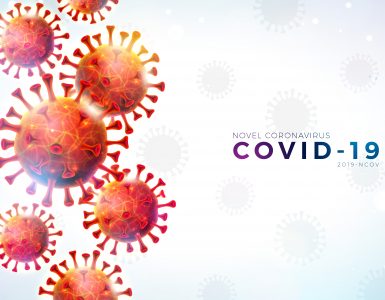Diagnostic methods of Covid 19 and novel trends

Covid 19 is the recent coronavirus outbreak which arose due to SARS CoV 2 virus in late 2019, pointing the city of China; Wuhan as its epicenter. There are about 4.26 millions of confirmed cases worldwide bringing the death total over 292,000 by the time this article is being prepared. Therefore this is the largest pandemic situation we are facing for the recent history of mankind. However in Sri lanka the situation is not much severe compared to the other countries, as the number of deaths due to Covid 19 is 9, but we also have a total of 889 confirmed cases.
There are seven coronaviruses that can cause diseases in humans. They are SARS CoV, MERS(middle east respiratory syndrome) CoV, SARS CoV-2, HKU1, NL63, OC43 and 229E(Andersen et al., 2020). However only three types; SARS CoV, MERS CoV and SARS CoV-2, can cause severe diseases in humans while others cause mild symptoms. SARS means severe acute respiratory syndrome and the first outbreak of SARS occurred during 2002-2003. By studying the evolutionary aspects of SARS CoV 2 virus, the scientists have mentioned that this is not a laboratory made virus and most probably it has originated inside bat population as a natural process due to the evolution of bat coronaviruses present inside them(Zhou et al., 2020).
The diameter of the virus is 60 -140 nm(Udugama et al., 2020), and it contains protein spikes in its envelop. It has a single stranded positive sense RNA genome which is 30,000 nucleotides in length. The overall features are more similar to the family Coronaviridae. When infecting a human cell this virus can interact with angiotensin converting enzyme 2 (ACE 2) for the entry in to human cells(Zhou et al., 2020). With those understanding, scientists focused on diagnostic techniques and try to develop them.
Figure 01:The structure of the SARS COV 2 Virus(Udugama et al., 2020).
Upper- Presence of the SARS COV 2 virus in damaged or killed human airway epithelial cells from negative stained transmission electron microscopy, below; structure of the SARS COV 2 virus.
Since Covid 19 is a pandemic and still the world does not have found a cure, diagnosis plays a critical role here to trace the chain of the spread of the disease in the population. As we all know World Health Organization introduced methods of social distancing, quarantine and lockdown to make the disease spreading process weaken. If one covid 19 positive patient is discovered, all of the people who had close contacts with that person will be tested for Covid- 19. Therefore a massive requirement of testing has led the world towards new technological innovations.
When considering the covid 19 diagnosis it is challenging due to having common symptoms with other respiratory diseases ranging from a simple common cold to a pneumonia condition arises because of another factor other than covid 19 infection. However the accuracy of those test results will influence directly on the patients’ lives and also the disease management processes of the country. Therefore the covid 19 testing should be accurate and specific. To make this process more standard the world health organization has issued the strategy recommendations for covid 19 testing(Laboratory testing strategy recommendations for COVID-19: Interim guidance).
There are two main types of Covid 19 testing; such as genetic testing and serological/ antigenic testing(COVID-19 Diagnostics: Technologies, Players and Trends | IDTechEx Research Article). Genetic testing is based on detecting viral genome. And the serological method; that means testing the presence of proteins in body fluids, focuses on detecting viral antibodies which are made inside of the patient’s body after the infection. The antigenic testing is also much similar to serological testing and here it is testing for the viral antigens. Viral antigens are specific proteins that present on the virus.
The molecular or genetic testing is more accurate due to the ability to target the virus specifically in the diagnostic process (Udugama et al., 2020). Molecular testing is based on reverse transcription polymerase chain reaction (RT PCR) method.
Those molecular diagnostic methods have 3 basic steps :-
- Sample collection
- extraction of viral RNA
- Amplification by RT PCR method and readout of the signal to quantify the amount of strands.
Polymerase chain reaction or PCR in short; simply means the production of numerous polynucleotide chains using one such polynucleotide chain as the template. This polynucleotide chain can be a DNA molecule or a RNA molecule. This process can be explained by a simple example, making a necklace using pearls. There are four types of nucleotides which are required to make a polynucleotide chain. Those four types of nucleotide units can be consider as pearls in four colours. Then as we make a necklace using those pearls in an attractive order, those four types of nucleotides will be attached in an ordered way when preparing a polynucleotide chain. The PCR machine will give us thousands of copies from a single polynucleotide chain. This is very important as our molecular detectors in diagnosis of covid 19 cannot detect a single polynucleotide chain in patient sample. This process will give us a large amount of strands to be identified.
Figure 02: PCR process in covid 19 testing(How COVID-19 test works: Know the basics | World – Gulf News).
Reverse transcription means the production of a DNA from a single RNA molecule. This virus has RNA as its genetic material and therefore revers transcription process is important while doing a PCR. In the process of PCR the temperature increases and decreases in a cyclic manner for many times maintaining a higher temperature difference. RNA molecules are not heat stable for that extent. But DNA can remain without any damage. The most relevant diagnostic method for covid 19 testing is quantitative reverse transcription PCR (qRT PCR), however it needs a specific laboratory set up and also it consumes more time, which is the most limiting factor in this pandemic situation. There are hybrid systems that developed for the high specificity and sensitivity of molecular assays and the speed and low cost of lateral flow assays which will discuss later in this article.
Other than those molecular tests, antigenic testing and serological testing are also play a major role as rapid tests. These two methods are depending on antibody antigen detection. The antibodies produced against the SARS CoV 2 virus can be detected from the seventh day and it remains months or years in the blood. Antibody testing is more important to identify the level of immunization and the extent of the pandemic(COVID-19 Diagnostics: Technologies, Players and Trends | IDTechEx Research Article).
More recently the molecular diagnostic assays and lateral flow assay hybrids become popular in diagnosis of covid 19 as a quicker diagnostic method. Then the public attention was moved towards point of care molecular diagnostic methods and point of care lateral flow assays. The point of care testing simply means the testing of the samples for the presence of the disease at the time and place of patients care.
Figure 03: Lateral flow assays in point of care process of covid 19 diagnosis(Rapid COVID-19 Antibody Detection Tests: Principles and Methods – Assay Genie).(Diagnostic methods of Covid 19 and novel trends)
Figure 04: covid 19 lateral flow assay results(COVID-19 IgG/IgM Lateral Flow Assay (LFA)).
The process of SARS CoV 2 viral detection and covid 19 diagnosis can be shown in a flow chart as mentioned bellow.
Figure 02;The process of diagnostic of SARS CoV 2(COVID-19 Diagnostics: Technologies, Players and Trends | IDTechEx Research Article).
Therefore many rapid and point on care tests are developing using the lateral flow assays as it is faster and cheaper. Home testing kits are developing too. However the specificity and sensitivity is lower than molecular testing. And here, they directly measure the viral load or the antibody concentration.
Table 01: comparison between different diagnostic methods of SARS CoV 2 virus(COVID-19 Diagnostics: Technologies, Players and Trends | IDTechEx Research Article).(Diagnostic methods of Covid 19 and novel trends)
Apart of biotechnological testing methods, there are other types of methods which are developed to help this diagnosis process in this pandemic situation. For example the CT scan technique has been used as it can take several images of the lungs in different angles and therefore people who are expertise in analyzing those images can predict the stage of the disease in the particular patient.
Read More Posts:
Identical Twins- A View Through Nature, Nurture and Epigenetics(Opens in a new browser tab)
Author –
Piyumi Nanayakkara
Undergraduate-Immunology and Integrative Molecular Biology
Faculty of Science
University of Colombo
References :- Andersen, K. G., Rambaut, A., Lipkin, W. I., Holmes, E. C., & Garry, R. F. (2020). The proximal origin of SARS-CoV-2. In Nature Medicine (Vol. 26, Issue 4, pp. 450–452). Nature Research. https://doi.org/10.1038/s41591-020-0820-9 COVID-19 Diagnostics: Technologies, Players and Trends | IDTechEx Research Article. Retrieved May 9, 2020, from https://www.idtechex.com/en/research-article/covid-19-diagnostics-technologies-players-and-trends/20484 COVID-19 IgG/IgM Lateral Flow Assay (LFA). Retrieved May 12, 2020, from https://dlongwood.com/en/products/covid-19-igg-igm-lateral-flow-assay-lfa/ How COVID-19 test works: Know the basics | World – Gulf News. Retrieved May 12, 2020, from https://gulfnews.com/world/how-covid-19-test-works-know-the-basics-1.1585053677091 Laboratory testing strategy recommendations for COVID-19: Interim guidance. Rapid COVID-19 Antibody Detection Tests: Principles and Methods – Assay Genie. Retrieved May 12, 2020, from https://www.assaygenie.com/rapid-covid19-antibody-detection-tests-principles-and-methods Udugama, B., Kadhiresan, P., Kozlowski, H. N., Malekjahani, A., Osborne, M., Li, V. Y. C., Chen, H., Mubareka, S., Gubbay, J., & Chan, W. C. W. (2020). Diagnosing COVID-19: The Disease and Tools for Detection. ACS Nano. https://doi.org/10.1021/acsnano.0c02624 Zhou, P., Yang, X. Lou, Wang, X. G., Hu, B., Zhang, L., Zhang, W., Si, H. R., Zhu, Y., Li, B., Huang, C. L., Chen, H. D., Chen, J., Luo, Y., Guo, H., Jiang, R. Di, Liu, M. Q., Chen, Y., Shen, X. R., Wang, X., … Shi, Z. L. (2020). A pneumonia outbreak associated with a new coronavirus of probable bat origin. Nature, 579(7798), 270–273. https://doi.org/10.1038/s41586-020-2012-7 Featured image from:https://www.freepik.com/free-photos-vectors/background






Add comment